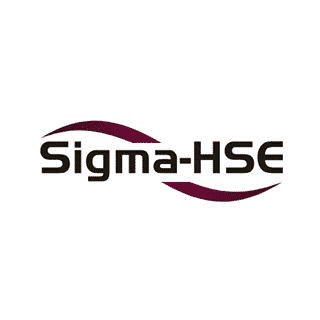What is a HAZOP? A Guide to Navigating Complex Processes
In the United States, the Occupational Safety and Health Administration (OSHA) and the United Kingdom/European Union Health & Safety legislative bodies require Process Hazard Analysis (PHA) to identify, reduce, and manage workplace hazards.
HAZOP, an abbreviation for Hazard and Operability Study, is globally acknowledged as a technique for process hazard analysis and identification and is integral to risk management.
Although extremely effective, HAZOP studies are highly complex and resource-intensive. For simpler processes with clear hazards, methodologies such as checklists, what-if analysis, and HAZIDs are more suitable approach to identify and address risks. Its complexity, however, makes it ideal for intricate processes.
Workplace hazards, whether inherent, physical, or chemical, harbor the potential for harm and encompass considerations like flammability, toxicity, and environmental impact. Identifying and understanding these hazards lays the groundwork for a robust safety strategy. Identifying hazards within your process that could lead to concerns is the focus of the HAZOP study.
This first of this three-part blog series on the importance of HAZOP studies will provide an overview of key terminology, explore critical aspects of the HAZOP study, delve into why it’s a necessary undertaking, and provide examples of how this methodology can seamlessly integrate into any stage of your process safety journey.
HAZOP Terminology: Unravelling the Methodology
Before delving into the intricacies of a HAZOP study, it’s essential to understand the terminology associated with processing hazards. Identifying the type and realistic magnitude of these hazards forms the bedrock of a comprehensive safety strategy.
Process hazards vs. non-process hazards
Within PHAs, a distinction arises between process hazards and non-process hazards. Process hazards, intrinsic to the operation’s dynamics, involve parameters such as pressure, temperature, and level control. On the contrary, non-process hazards, though significant, fall outside the PHA scope. These encompass on-site occupational safety issues like falls, slips, trips, and improper PPE usage.
Process parameters and design intent
Examining the details of process parameters is pivotal. Whether it’s a reactor vessel, heat exchanger, or a storage vessel, understanding design intent is key. Deviations from the intended purpose, such as loss of heat exchange efficiency or fluid temperature control will highlight potential hazards. It’s crucial to discern what changes within the process could lead to concerns warranting exploration in a HAZOP study.
Process risk: Evaluating consequences
Process risk delves into the potential consequences of identified hazards. From overflows in containment facilities to chemical spills with associated risks, this analysis gauges the severity and potential impact on personnel, equipment, and the environment. Understanding the consequences allows for a complete assessment of the risk associated with each process hazard.
Process Hazard Analysis and HAZOP as tools for safety
PHA serves as the overarching technique for identifying and analyzing hazards. HAZOP, a specific methodology within PHA, scrutinizes the operability aspects of a system. Other methodologies, like HAZIDs, what-ifs, and checklists, also play a role based on the intricacies of the process.
It must be noted that the US lacks a set requirement for methodology, promoting flexibility to choose the most suitable approach for each unique situation. Factors to be considered when determining the appropriate methodology include:
- The complexity of the process
- The inherent hazards associated with the materials in the process
- The expertise of the team performing the risk assessment study
- Any policies and procedures in place within a company that dictates methods of risk assessment
Essential information for PHA/HAZOP studies
A wealth of information is indispensable to conduct a comprehensive PHA/HAZOP study. This includes detailed data on chemicals, processes, and equipment. Process and Instrumentation Diagrams (P&IDs), process flow diagrams, and energy balances can offer a comprehensive overview. Detailed information on the operating envelope for parameters such as temperature, pressure, and flow rate and safe operating conditions of the equipment and associated piping and instrument, including details, namely max allowable working pressure, vacuum rating, and failure temperature, allows for a more realistic estimation of severity and likelihood of hazard scenarios.
HAZOP Study: A Structured Deep Dive
Unlike broader risk assessment and hazard analysis methods, HAZOP dissects the intricacies of a system piece by piece, focusing on each equipment unit.
This detailed examination involves scrutinizing every parameter against the designed intent of the equipment and understanding potential failure modes. The result is a comprehensive understanding of the system’s vulnerabilities and potential issues.
Guide words:The foundation of analysis
HAZOP’s efficacy hinges on the implementation of guide words. These guidewords serve as the touchstones for the analysis to prompt and identify potential deviations. Whether it’s ‘more,’ ‘less,’ ‘no,’ or ‘as well as,’ these guide words steer the discussion towards potential scenarios that could compromise safety. This approach ensures that no stone is left unturned in identifying possible workplace hazards.
The power of a multi-disciplinary HAZOP team
A diverse and knowledgeable set of HAZOP team members are key. A single individual cannot grasp the complexities of a process entirely. Thus, a multi-disciplinary team becomes the linchpin of a successful HAZOP analysis.
The team comprises of a facilitator/chair, design engineering, test engineering, safety experts, maintenance personnel, and operations professionals. This amalgamation of expertise ensures a high-level, holistic perspective, leaving no aspect of the process unexamined.
Equipment-centric analysis
HAZOPs zoom in on the intricacies of each piece of equipment. By examining the parameters specific to the designed intent of the equipment, the study can uncover potential failure points that might be overlooked in broader analyses. This methodical examination not only identifies hazards but also provides insights into how these hazards could manifest under different conditions.
Navigating the Unknown: Why HAZOP?
When faced with a new process, unfamiliar chemicals, or major updates to established existing processes, conducting a HAZOP in the early stages proves invaluable. It serves as a proactive measure, aiding in the design of processes that are inherently safe. The systematic examination of each parameter against the designed intent of equipment ensures a thorough understanding of potential pitfalls and enhances the safety profile of the process.
Procedural precision
Beyond its primary focus to identify hazards, HAZOP also serves as a procedural development tool. By scrutinizing procedures, it minimizes opportunities for human errors. This meticulous approach ensures that operational protocols are written in a way that mitigates human failure. Potential causes examined during a procedural review include performing steps out of order, skipping steps, performing an appropriate action on an incorrect element, performing an incorrect action on the appropriate element, and performing actions too early or late in the process.
Systematic safety oversight: Ensuring operability
One of the core utilities of HAZOP lies in its ability to act as a systematic track for operability. It questions the safeguards in place and evaluates their relevance to potential scenarios. This analysis prevents scenarios where over-instrumentation may lead to faults, trips, and operability concerns or, conversely, situations where under-instrumentation could result in undetected failures until a catastrophic event occurs.
Proof of due diligence
HAZOP isn’t merely a process; it’s proof of due diligence. By undertaking a comprehensive HAZOP study, organizations showcase their commitment to identifying and addressing as many hazards as possible. It stands as an acceptable form of Process Hazard Analysis (PHA), providing assurance to regulatory bodies and stakeholders that all necessary steps have been taken to ensure safety.
Adapting to change: Confirming modifications
As processes evolve with new equipment, materials, or procedures, HAZOP plays a critical role by ensuring that process modifications don’t introduce new hazard scenarios. This adaptability confirms that changes within the design process align with safety protocols, offering a layer of assurance against unforeseen risks.
As industries evolve, the adaptability of HAZOP ensures a proactive and comprehensive approach to identifying, mitigating, and addressing potential hazards.
HAZOP and Your Process Lifecycle
Front-End Engineering Design (FEED)
During the Front-End Engineering Design (FEED) phase, when design decisions are taking shape, conducting a HAZOP is a prudent step. This early analysis allows for the ranking of potential technologies against each other, unveiling the comparative risks and hazards associated with each option.
Dive into detailed design: Sanity check
As the design progresses and reaches a detailed point, a HAZOP serves as a crucial sanity check. This stage ensures that the safeguards in place are not just on paper but are effective in addressing the identified concerns. It’s a moment of reflection and validation, confirming that the safety measures align with the intricacies of the evolving design.
Managing change: A continuous evaluation
Change is inevitable in any dynamic process environment. Anytime a design change is in the offing, particularly during the finalization of the design, a HAZOP should be on the checklist. A Management of Change process should trigger a HAZOP review, especially if the change is substantial.
This ensures that new risks are identified and the HAZOP is updated accordingly.
Pre-commissioning vigilance: Ensuring sense in procedures
Before the green light for commissioning is given, a HAZOP can be completed during pre-commissioning activities. With construction completed and startup imminent, this analysis ensures that commissioning procedures align with safety protocols. It’s a preventive measure to catch any discrepancies before the process goes live.
Normal operation audits: Periodic vigilance
HAZOP isn’t a one-time affair; it demands periodic attention. Regular audits during normal operations are essential. This ensures that the facility is operating within the safety parameters identified during the HAZOP study.
In the United States, OSHA dictates that all processes that fall under the guidance of the PSM standard be reviewed and revalidated on a five-year basis. Furthermore, if an incident occurs, there might be a requirement to update the HAZOP at a greater frequency than the standard five years as part of the required corrective actions.
Navigating Safely Through Complexity
Hazard and Operability Studies (HAZOPs) stand as a testament to the commitment to safeguarding operations.
The complexity of HAZOPs necessitates a thoughtful selection of tools based on the complexity of the operation and the level of detail required for hazard identification. For more straightforward hazards, methodologies such as checklists, what-if analyses, and HAZIDs may be more fitting.
HAZOP’s structured deep dive into each equipment unit, foundation in guide words, and reliance on a multi-disciplinary team ensure a comprehensive examination. It serves not only as a hazard identification tool but as a procedural development tool, contributing to a safer working environment by minimizing human errors.
Throughout the process lifecycle, from Front-End Engineering Design (FEED) to pre-commissioning and normal operation audits, HAZOP remains a vigilant guardian against unforeseen risks. Its continuous evaluation during changes and updates confirms that safety protocols align with evolving processes.
HAZOP is not just a methodology; it’s a strategic choice to navigate the complexity of industrial processes safely. As industries evolve, the enduring relevance and adaptability of HAZOP ensure that safety remains at the forefront of operations.







